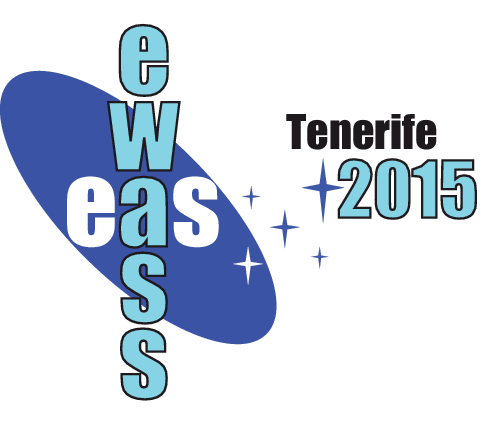Special Session Sp18
24 June 2015
Chemical abundances and gradients in spatially resolved late-type Galaxies in the Local Universe
Aims and scope
How disc galaxies form remains an outstanding problem in extragalactic astronomy. A key difficulty is found when trying to reconcile the violent early collapse and merger histories of galaxies in the hierarchical clustering paradigm with the existence of "fragile" discs. Observations suggest that the inner regions of massive (Milky Way-like) disc galaxies contain the oldest stars, and that their scale-lengths grow "inside-out" with time. By contrast, evidence suggests that low-mass discs (such as the LMC) build-up in the opposite sense - i.e.young stars are found to be more centrally concentrated than older stars. The situation for intermediate-mass (~10^10 solar masses) discs is unclear, but appears to be a mixture of these two mass regimes.
One particularly powerful approach to understanding disc formation is to study the metallicity gradients of their stars and how these gradients evolve with time. The time evolution of metallicity gradients in discs is important because it is directly linked to disc growth: gradients encode the location and metallicity of gas accreted to a disc, and any subsequent dynamical evolution of disc stellar populations. Some chemical evolution studies conclude that the metallicity gradient in the disc will steepen with time as the central regions become further enriched, while other studies suggest that discs will evolve to flatter gradients as star formation moves from the inner to the outer regions of the disc. Observationally, the best approach to confront these different theories is to study nearby discs in detail and compare the metallicity patterns obtained from stellar populations that trace different epochs of star formation. For example, HII regions and OB stars probe disc formation at Myr look-back times, while planetary nebulae (PNe) and red giant branch (RGB) stars trace earlier epochs (~2-13 Gyr ago). By combining information from different populations, the time evolution of the metallicity gradient of a disc, and hence disc formation, can be studied over the entire disc lifetime.
Programme
- Disc formation mechanisms. Outside-in/Inside-out scenarios
- Abundance patterns in disk Galaxies of the local Universe from different stellar populations
- Temporal evolution of abundance gradients
- Chemo-dynamical evolution models
Invited speakers
- Brad Gibson (U. Central Lancashire, UK)
- Laura Magrini (INAF, Italy)
Scientific organisers
Jorge García-Rojas (IAC, Spain), Mike Beasley (IAC, Spain), Patricia Sánchez-Blázquez (UAM, Spain), Chris Brook (UAM, Spain), Christina Chiappini (AIP, Germany)
Contact
jogarcia @ iac.es, beasley @ iac.es
Updated on Fri Mar 27 16:42:03 CET 2015
|

 A power cut will shut down all EAS services on Tuesday, 10 January 2017 starting at 7:30 CET.
A power cut will shut down all EAS services on Tuesday, 10 January 2017 starting at 7:30 CET.


















